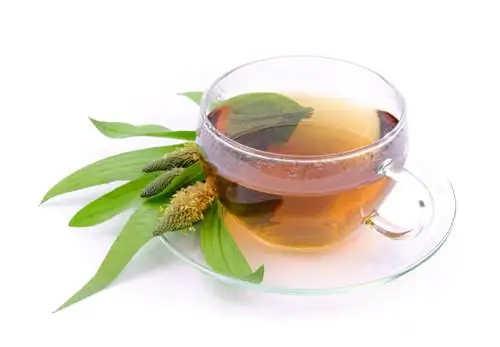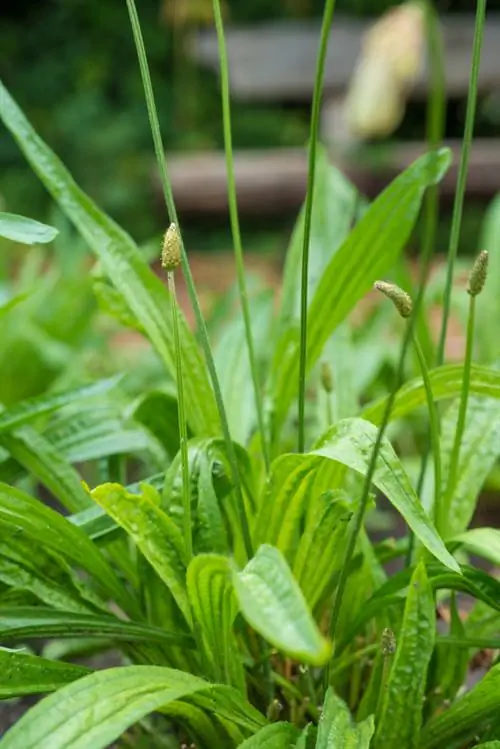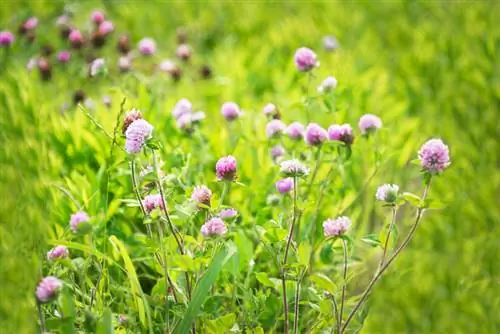- Author admin [email protected].
- Public 2023-12-16 16:46.
- Last modified 2025-01-23 11:20.
The ribwort plantain (Plantago lanceolata) has been used for centuries as a natural medicine with a wide range of possible uses. The leaves and flowers of the plant can also be used as a tasty ingredient in many recipes.

What are the properties and uses of ribwort plantain?
Ribwort plantain (Plantago lanceolata) is an edible plant that is traditionally used for coughs and bronchial problems. It thrives in sunny to partially shaded locations with loose, nutrient-rich soil and can be used in wild herb salads, pestos and herb curds.
Uses of ribwort plantain in the kitchen and natural pharmacy
The juice contained in the leaves of the ribwort plantain has an expectorant effect and is therefore a good remedy for treating coughs and bronchial problems. The active ingredients of the plant can be used in different ways:
- as juice obtained with a centrifuge
- as a tea from the dried leaves
- as syrup
- for external wound treatment with chewed or ground leaves
Since the leaves of the ribwort plantain are difficult to dry, you should, if possible, harvest them after a few days of continuous summer drought. You should also choose a remote location to avoid washing off possible pesticides or contamination from dogs. This also generally applies if you collect ribwort plantain for your own consumption or to feed to horses and rabbits. Thanks to its slightly mushroom-like taste, ribwort plantain is a valuable ingredient for wild herb salads, wild herb pesto and herb quark. The flowers that have not yet bloomed can be lightly roasted and added to various dishes as a porcini mushroom-like flavor.
How do you recognize the ribwort plantain?
The edible ribwort plantain can be recognized relatively clearly by its lanceolate leaves and can at most be confused with the broadleaf plantain, which is also non-poisonous. When it blooms in summer, the brown flower heads with their wreath of white individual flowers rise high from the leaf rosettes.
How can the ribwort plantain be planted in the garden?
The ribwort plantain is a relatively undemanding plant and can be sown in a sunny to partially shaded location in the garden. Growing it on the balcony is not recommended as the ribwort plantain's roots dig very deep into the ground. The soil should ideally be loose and nutrient-rich, and always slightly moist. Since the ribwort plantain does not tolerate waterlogging, you should loosen up heavy soils with quartz sand (€15.00 on Amazon) or pumice. After sowing the seeds about 1.5 centimeters deep in early April, ribwort plantain usually germinates within about 14 days.
Tips & Tricks
If you want to control ribwort plantain in the lawn, you must make sure to cut deeply to avoid self-seeding. The manual removal of the plants with the roots is laborious, but at the same time it allows them to be used in natural medicines and kitchen recipes without any contamination.






